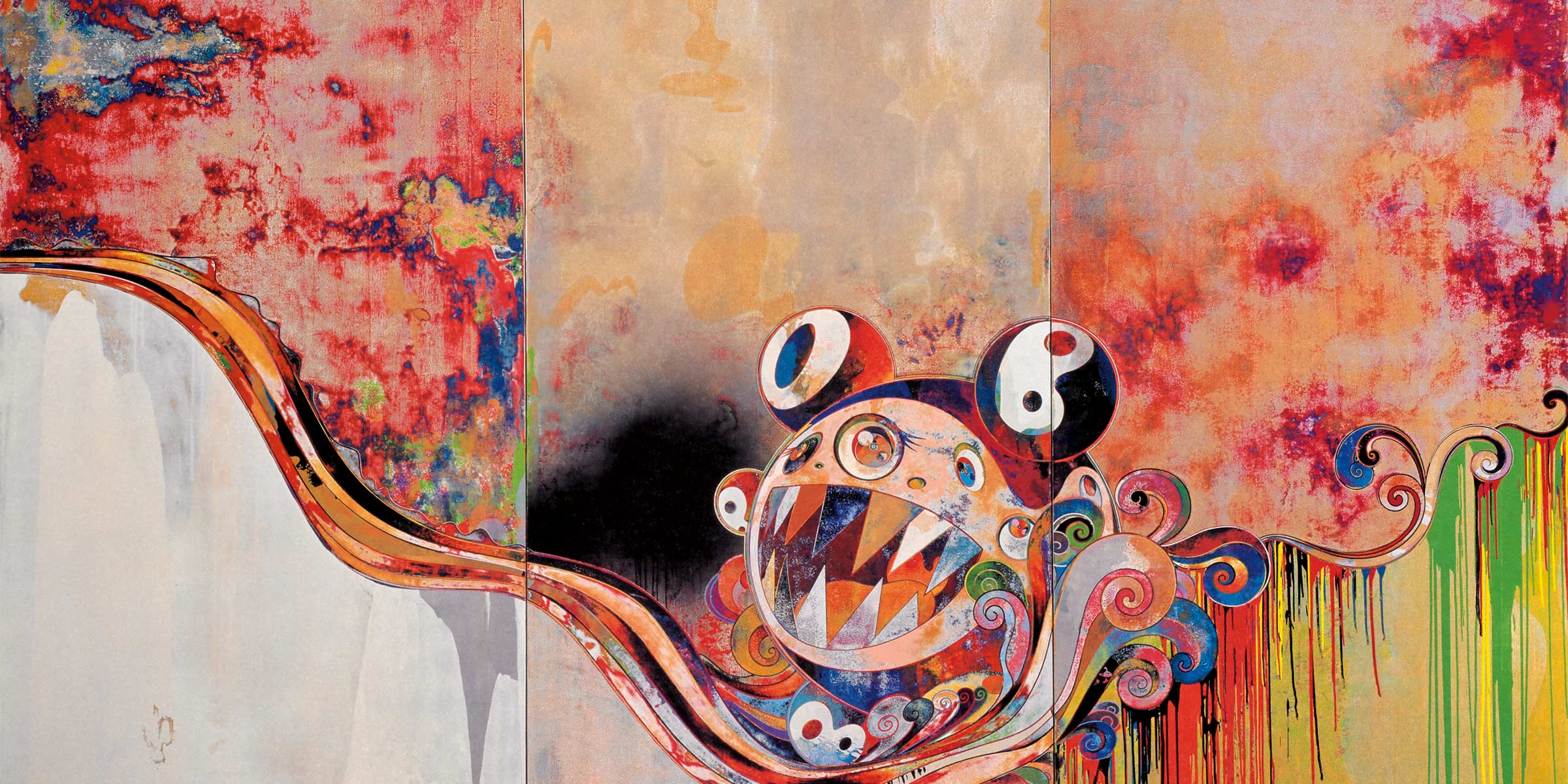Takashi Murakami, 1962-
Takashi Murakami, 727-272, 2007.
http://martinlawrence.com/takashi-murakami/
By Natasha Sivanandan
This week belongs to the fascinating artistic genius of Takashi Murakami, born February 1st, 1962 in Tokyo, Japan. His range, diversity and novel creations have been key in the transformation of 21st century commercial art, crossing cultural boundaries and breaking with conventional definitions of Western modern art. He initially studied in the field of traditional Japanese art and gained a Ph.D. in Nihon-ga style. However, he realised he was dissatisfied with the state of Japanese contemporary art, which seemed to be too much of ‘a deep appropriation of Western trends.’ A prominent feature of his early work was its satirical approach to social criticism. For example, his conceptual art project, Randoseru Project (1991), which was composed of eight mimic leather backpacks, commented on luxury culture’s exploitative use of pelts from endangered species, as well as art’s place in luxury goods. More recognisably, his work can be seen in collaborations with Kanye West (the iconic ‘The Kanye Bear’ (2009)), Pharrell Williams, Louis Vuitton, Issey Miyake, and Shu Uemura.
Yet, what really made him so influential and globally-recognised was his ability to redefine a sustainable art market in a post-war Japan. He sought to find a way to bring art that was uniquely Japanese to an international level of recognition, and not be forced into Western delineations and parameters for the art market. Murakami looked to aspects from Japanese ‘low-art’ culture, such as in anime, manga and the larger subculture of otaku. Then, to bring it to the global art market, he developed a strategy of first establishing himself in the Western art world, and then importing his work back to Japan. He additionally developed a theoretical definition to his work and created the concept of Superflat (2000). This theory posited that there was a heritage of two-dimensionality in Japanese art culture that has continued into anime and manga. The style was very different from the Western tradition, which sought to emphasise three-dimensionality. Superflat served also as a social commentary on post-war Japanese artistic culture. Murakami believed that, because social class and popular taste had ‘flattened,’ the line between ‘high’ and ‘low’ art had also become blurred.
The way the world understands Japanese contemporary artistic culture, through the adoption of ‘low’ art forms, owes much to Murakami’s artwork, art theory, and social commentary, which has transformed the art world and has given Japan a significant and uniquely-recognised platform.
Bibliography
Falconer, Morgan and Chou, Mary. 2010. “Murakami, Takashi.” Grove Art Online. 4 Feb. 2018. http://www.oxfordartonline.com/groveart/view/10.1093/gao/9781884446054.001.0001/oao-9781884446054-e-7000097680.
Hebdige, Dick. 2007. “Flat Boy vs. Skinny: Takashi Murakami and the Battler for Japan.” In Murakami by Schimmel, Paul. Los Angeles: Museum of Contemporary Art/Rizzoli International Publications Inc.
Lederman, Marsha. 2018. “Superstar Japanese Artist Takashi Murakami Opens Stunner of a Show in Vancouver.” The Globe Mail, February 1st, 2018. https://www.theglobeandmail.com/arts/art-and-architecture/superstar-japanese-artist-takashi-murakami-opens-stunner-of-a-show-in-vancouver/article37828343/
Murakami, Takashi. 2003. “Life as a Creator.” In Summon Monsters? Open the Door? Heal? Or Die? By Murakami, Takashi. Tokyo: Hiropon Factory/Kaikaikiki.

